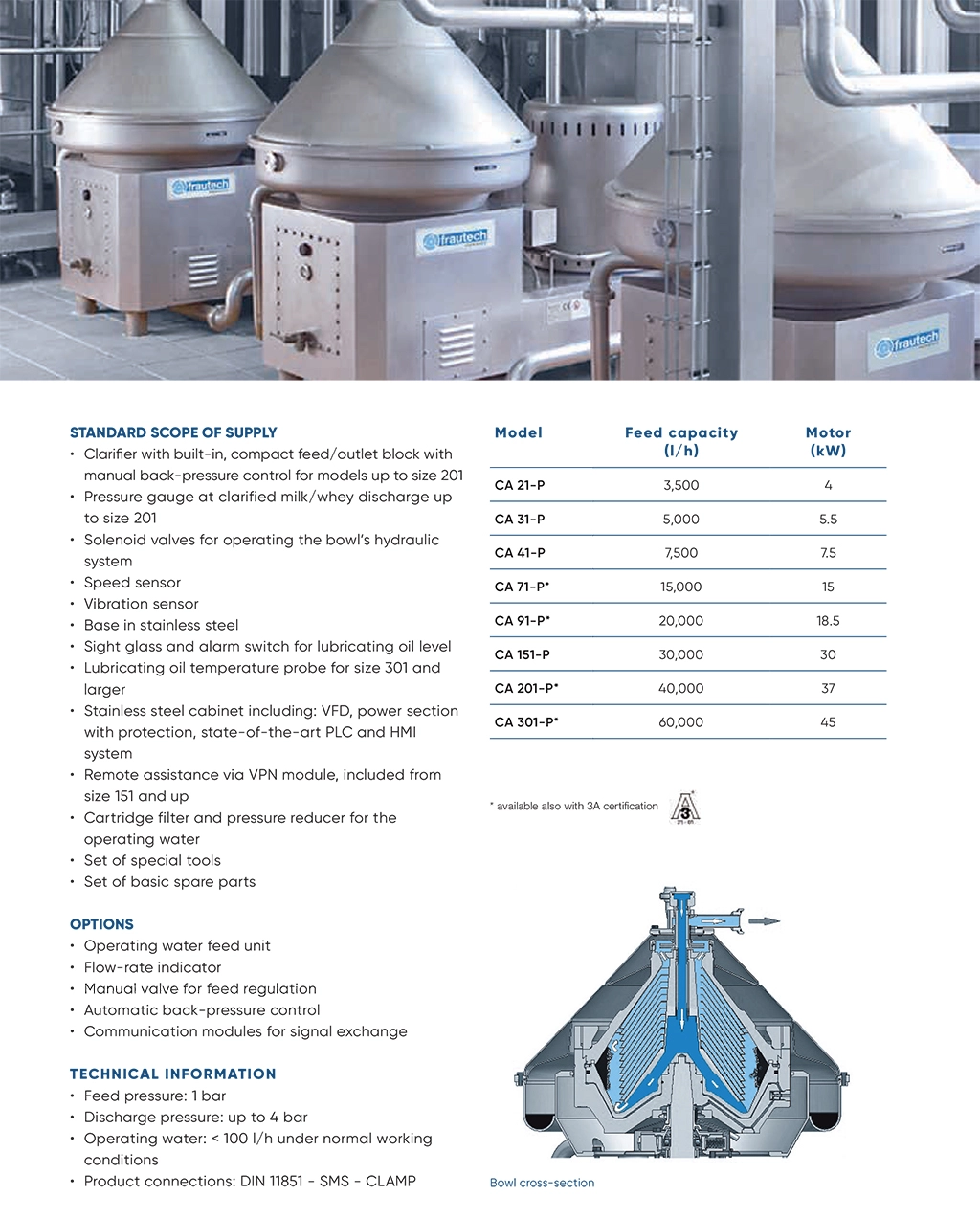Clarifiers
Milk clarifi cation is a very important step in milk processing when aiming for high-quality dairy products. The purpose of milk clarifi cation is to improve the milk quality by removing solid impurities such as dirt, straw, and sand particles, somatic cells, and bacteria.
The effective separation of solid impurities is strictly linked to the viscosity of the milk: the lower the viscosity, the higher the separation effect. Hence, for clarification purposes, warm milk is preferred to cold milk and a clarification temperature of approximately 50 °C may be considered as the optimum temperature to achieve maximum efficiency. Nonetheless, especially in those areas where the raw milk quality is questionable, milk clarification can also be performed with cold milk as soon as it arrives at the dairy. In whey processing, the clarifier allows removal of the cheese fines prior to whey skimming. This leads to increased efficiency in cream separation, resulting in higher fat recovery with low and consistent residual fat content in the skimmed whey. A low residual fat content helps to optimize operation of the membrane filtration unit or evaporator that follows
OPERATING PRINCIPLES
• The milk/whey is fed under pressure through an enclosed pipe.
• It then fl ows smoothly into the bowl through the feed pipe and the distributor.
• Thanks to the action of the centrifugal force, the solids are forced towards the periphery
of the bowl and accumulate in the solids acceleration zone.
• The clarifi ed milk/whey rises through the disc stack up to the centripetal pump that discharges it through an enclosed pipe.
• The accumulated solids are automatically discharged at pre-set intervals


